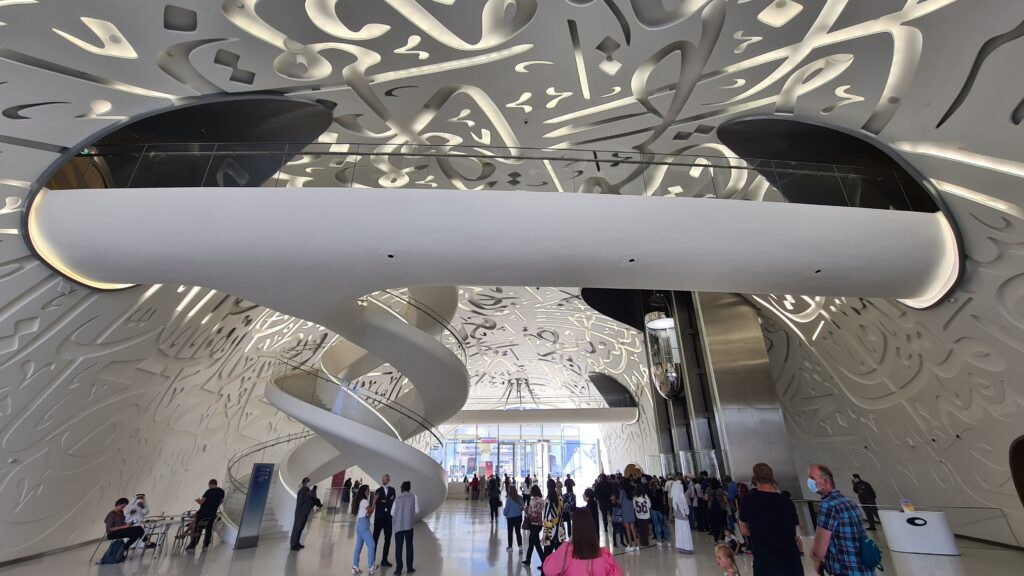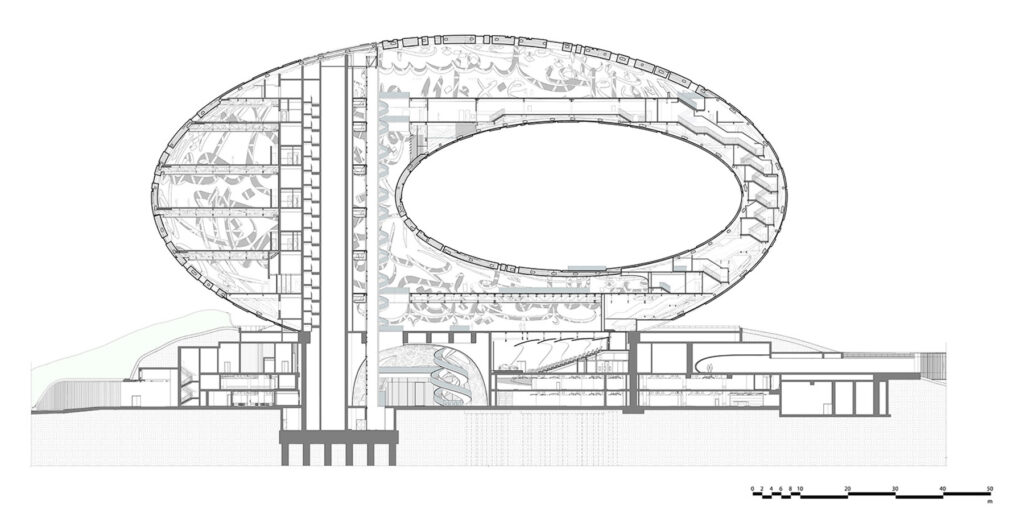Hi, I’m Raneem! I’m in my fourth year of school. I major in Management Information Systems and minor in Computer Science. My focus of study is data science and big data. I enrolled in this class to learn more about how I can apply big data to computer fabrication. I also want to discover all the cool and fun techniques used to make computer fabrication possible.
Art and Language
The piece I want to share is the Museum of the Future designed by Killa Design Architects and engineered by Buro Happold located in Dubai.




This landmark consists of three elements: the hill, the museum, and the void. The hill represents the earth, time, and history. The void, the circle in the center, represents the ‘unknown’, those who are looking for new innovations to create. The museum brings together the work of designers, researchers, inventors and engineers. The work represents cultural, social, and spiritual views.
I chose to share this unique project as it defines the art of Arabic Calligraphy and presents it as a part of a building. It is important to note that Arabic Calligraphy itself has its own set of math and rules like how much distance between one stroke to the next to form a symmetrical image. This project doesn’t just portray the result of architecture and engineering, but how a language can be written on a surface that isn’t just flat – like a piece of paper.
To learn more about the design see this link.
The Designer and Team
- Shaun Killa (Design Partner)
- Maryam Hosny (Site Architect)
- Tommaso Calistri (Senior Architect)
- Mariska Stoffel (Senior Architect)
Shaun Killa, the mastermind behind this project, was the one who dreamt of its existence. As the founder of Killa Design, Killa wanted to incorporate his philosophy on buildings in a holistic manner. Killa graduated from the University of Cape Town in South Africa with a Bachelor of Architectural Studies and started his career towards this project in Germany. With the assistance of his team (listed above), Killa was able to make his dream a reality. To learn more about his perspective on the project see this link.
The original draft is seen below.
Killa then used WhatsApp to send a photograph of the sketch to a colleague who was doing the computer modelling. “The next morning he wrote back, “I don’t understand’,” Killa says with a smile.
– John Dennehy
:quality(70)/cloudfront-eu-central-1.images.arcpublishing.com/thenational/4TPC5EQZVVHUNFDVDQWEZ4KRTE.jpg)
Computational Method Used
Buro Happold, an engineering company, used computational tools to arrange the structure. One of the computational methods used was geometric rules such as common element diameter size. To tackle the curves of this project, fabrication processes were used to create different sizes of steelwork. Additionally, the processes were used to make sure that there was no waste of resources by using all available materials. I find the idea of using geometric rules interesting since it defines the basic rules for making a structure perfect. Additionally, if one small part of the math is incorrect, the entire structure could potentially fail. To read more view this link.


What an absolutely gorgeous building to feature! I love the combination of geometry and calligraphy to make such an aesthetic building. As a (mostly) figurative artist, Islamic art has always fascinated me because of its emphasis on repeating geometric patterns and how it functions together as a whole.
I’m currently enrolled in the Architecture program here at UNM and we are finding more and more that we can not build modern buildings without computers. The help with the engineering and physics that play along with constructing and the longevity of the structure. Without computers and the combined fabrication these buildings would never see the light. Thanks for the insight on a new Architect to follow.
Hello Raneem! This is a really intriguing example of computational design. I love the idea of functional art that represents a deeper concept, like this merging of three elements and the void of creative possibilities. I didnt realize that Arabic was so mathematical and symmetric, that’s really cool because it appears so organic and fluid. It pretty cool to realize that imposing this upon a curved surface required extra computing to get right:)
Hello Raneem, what an incredible and detailed description and pictures. I did not know that Arabic Calligraphy itself has its own set of math and rules like how much distance between one stroke to the next to form a symmetrical image. That is such an interesting fact. I have many Arabic friends and I am so excited to tell them what I just learned! Thank you for sharing this amazing design.